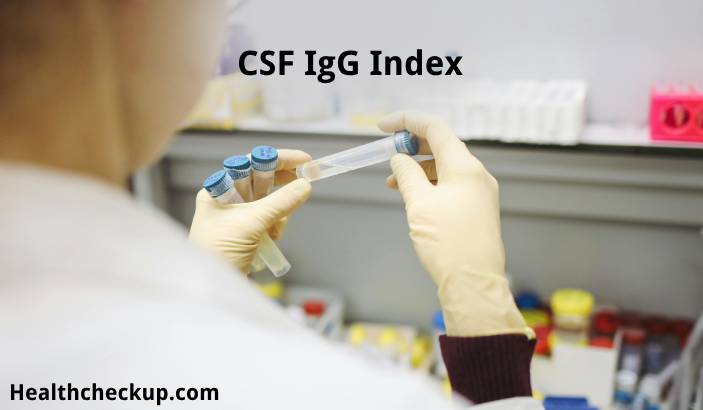The Cerebrospinal Fluid (CSF) Immunoglobulin G (IgG) Index is an essential diagnostic test used predominantly in neurology. It plays a crucial role in assessing the immune response within the central nervous system (CNS), particularly in diagnosing diseases like multiple sclerosis (MS). This detailed article explores the CSF IgG Index, including its definition, purpose, procedural details, and the significance of its results.
What is the CSF IgG Index?
- CSF and Immunoglobulin G (IgG): CSF is a fluid that envelops the brain and spinal cord, providing protection and nourishment. IgG is the most common type of antibody found in the blood and CSF, playing a vital role in the body’s immune defense.
- Index Calculation: The CSF IgG Index measures the ratio of IgG in the CSF to that in the blood, adjusted for the albumin levels:
- Purpose of the Index: This calculation helps determine whether IgG is being produced within the CNS, indicating local immune activation.
Purpose of the CSF IgG Index
- Diagnosing Multiple Sclerosis (MS): MS is characterized by the immune system attacking the CNS, and the CSF IgG Index is pivotal in confirming the diagnosis.
- Detecting CNS Infections: Helps identify infections such as meningitis and encephalitis, where an immune response within the CNS is expected.
- Differentiating Neurological Conditions: Useful in distinguishing between autoimmune disorders and other neurological diseases affecting the CNS.
- Monitoring Disease Progression: In known cases of neurological disorders, variations in the IgG Index can indicate changes in disease activity or treatment response.
The Procedure of CSF IgG Index Testing
- Preparation and Positioning: Patients might need to fast and will typically lie on their side or sit bent forward during the procedure.
- Lumbar Puncture:
- Execution: A needle is inserted between lumbar vertebrae to extract CSF, usually with local anesthesia.
- CSF Collection: Only a small volume of CSF is required for testing.
- Blood Sample Collection: Blood is drawn to compare serum IgG and albumin levels with those found in the CSF.
- Analysis: The laboratory measures IgG and albumin levels in both the CSF and serum to compute the IgG Index.
Interpreting the Results of the CSF IgG Index
- Normal Range: A normal IgG Index typically lies between 0.3 and 0.7, indicating no significant intrathecal IgG synthesis.
- Elevated IgG Index: Values above 0.7 suggest active intrathecal IgG production, often seen in:
- Multiple Sclerosis: High specificity for diagnosing MS, particularly when combined with other markers like oligoclonal bands.
- Inflammatory and Infectious Diseases: Conditions like neurosarcoidosis or CNS infections can also elevate the index.
- Low IgG Index: Rarely clinically significant but can be seen in conditions with reduced protein synthesis or severe immunodeficiency.
Clinical Significance of the CSF IgG Index
- Diagnostic Utility: The test is highly valued for its role in confirming diagnoses of complex CNS disorders.
- Prognostic and Monitoring Tool: Regular monitoring of the IgG Index in diagnosed patients can guide treatment adjustments and provide insight into disease progression.
- Research Implications: Ongoing studies utilize the IgG Index to understand better the pathophysiology of autoimmune and infectious diseases of the CNS.
Risks and Considerations
- Procedure-Related Risks: Lumbar puncture can cause headaches, back pain, bleeding, or, in rare cases, infection.
- Interpretation Challenges: Results should be interpreted within the broader context of other diagnostic findings and the patient’s clinical presentation.
- Patient Comfort and Anxiety: Proper patient preparation and aftercare are essential to minimize discomfort and anxiety associated with the procedure.
The CSF Immunoglobulin G (IgG) Index is a cornerstone of neurological diagnostics, providing invaluable insights into the immune dynamics within the CNS. It aids in diagnosing multiple sclerosis and other significant neurological conditions, offering a window into the immune processes occurring in the brain and spinal cord. By accurately measuring and interpreting this index, healthcare professionals can make informed decisions about diagnosis, treatment, and management of CNS diseases, ultimately leading to better patient outcomes and advancements in neurology.
I specialize in writing about health, medical conditions, and healthcare, drawing extensively from scientific research. Over the course of my career, I have published widely on topics related to health, medicine, and education. My work has appeared in leading blogs and editorial columns.









